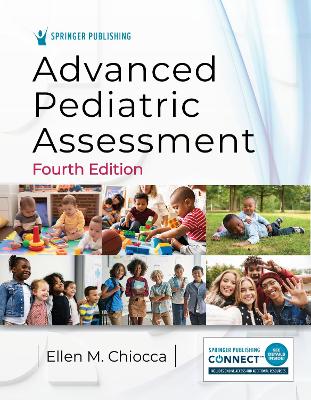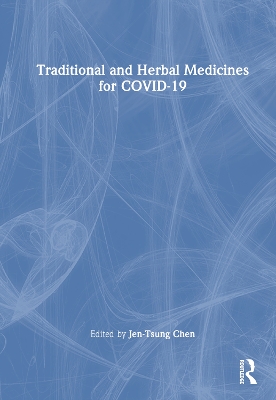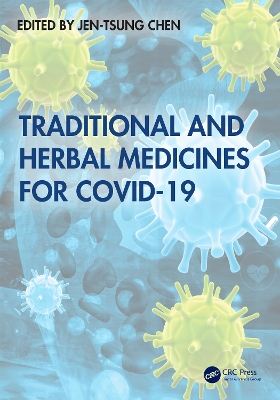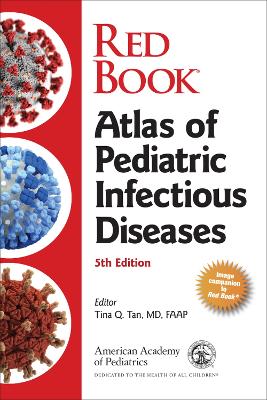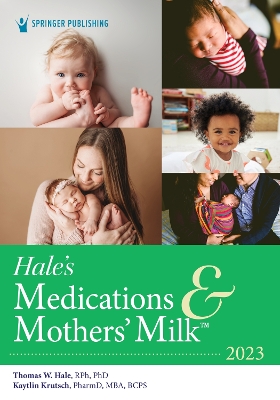2022 Nelson's Pediatric Antimicrobial Therapy
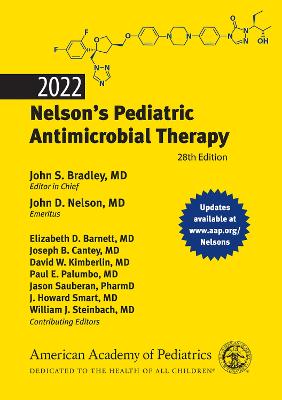 portes grátis
portes grátis
2022 Nelson's Pediatric Antimicrobial Therapy
; ; ; ; ; ; ; ;
American Academy of Pediatrics
04/2022
366
Mole
Inglês
9781610025645
15 a 20 dias
308
Descrição não disponível.
Introduction Notable Changes to 2022 Nelson's Pediatric Antimicrobial Therapy, 28th Edition 1. Antimicrobial Therapy According to Clinical Syndromes A. Skin and Soft Tissue Infections B. Skeletal Infections C. Eye Infections D. Ear and Sinus Infections E. Oropharyngeal Infections F. Lower Respiratory Tract Infections G. Cardiovascular Infections H. Gastrointestinal Infections I. Genital and Sexually Transmitted Infections J. Central Nervous System Infections K. Urinary Tract Infections L. Miscellaneous Systemic Infections 2. Antimicrobial Therapy for Neonates A. Recommended Therapy for Selected Neonatal Conditions B. Antimicrobial Dosages for Neonates C. Aminoglycosides D. Vancomycin E. Use of Antimicrobials During Pregnancy or Breastfeeding 3. Preferred Therapy for Specific Bacterial and Mycobacterial Pathogens A. Common Bacterial Pathogens and Usual Pattern of Susceptibility to Antibiotics (Gram Positive) B. Common Bacterial Pathogens and Usual Pattern of Susceptibility to Antibiotics (Gram Negative) C. Common Bacterial Pathogens and Usual Pattern of Susceptibility to Antibiotics (Anaerobes) D. Preferred Therapy for Specific Bacterial and Mycobacterial Pathogens 4. Choosing Among Antibiotics Within a Class: Beta-lactams and Beta-lactamase Inhibitors, Macrolides, Aminoglycosides, and Fluoroquinolones 5. Preferred Therapy for Specific Fungal Pathogens A. Overview of More Common Fungal Pathogens and Their Usual Pattern of Antifungal SusceptibilitiesB. Systemic Infections C. Localized Mucocutaneous Infections 6. Choosing Among Antifungal Agents: Polyenes, Azoles, and Echinocandins 7. Preferred Therapy for Specific Viral Pathogens A. Overview of Non-HIV, Non-hepatitis B or C Viral Pathogens and Usual Pattern of Susceptibility to Antivirals B. Overview of Hepatitis B or C Viral Pathogens and Usual Pattern of Susceptibility to Antivirals C. Preferred Therapy for Specific Viral Pathogens 8. Choosing Among Antiviral Agents 9. Preferred Therapy for Specific Parasitic Pathogens A. Selected Common Pathogenic Parasites and Suggested Agents for Treatment. B. Preferred Therapy for Specific Parasitic Pathogens 10. Choosing Among Antiparasitic Agents: Antimalarial Drugs, Nitroimidazoles, Benzimidazoles, and Neglected Tropical Diseases 11. How Antibiotic Dosages Are Determined Using Susceptibility Data, Pharmacodynamics, and Treatment Outcomes 12. Approach to Antibiotic Therapy of Drug-Resistant Gram-negative Bacilli and Methicillin-Resistant Staphylococcus aureus 13. Antibiotic Therapy for Children Who Are Obese 14. Sequential Parenteral-Oral Antibiotic Therapy (Oral Step-down Therapy) for Serious Infections 15. Antimicrobial Prophylaxis/Prevention of Symptomatic Infection A. Postexposure Antimicrobial Prophylaxis to Prevent Infection B. Long-term Antimicrobial Prophylaxis to Prevent Symptomatic New Infection C. Prophylaxis of Symptomatic Disease in Children Who Have Asymptomatic Infection/Latent Infection D. Surgical/Procedure Prophylaxis 16. Approach to Antibiotic Allergies 17. Antibiotic Stewardship 18. Systemic and Topical Antimicrobial Dosing and Dose Forms A. Systemic Antimicrobials With Dosage Forms and Usual Dosages B. Topical Antimicrobials (Skin, Eye, Ear, Mucosa) Appendix: Nomogram for Determining Body Surface Area References Index
Este título pertence ao(s) assunto(s) indicados(s). Para ver outros títulos clique no assunto desejado.
infectious diseases; antimicrobial agents; dosing; antimicrobail therapy by clinical syndromes; antimicrobial therapy for neonates; antibiotics; antifungal agents; antiviral agents; antiparasitic agents; oral step-down therapy for serious infections; prevention of symptomatic infection; antibiotic stewardship; approach to antibiotic allergies; abscesses; acute bacterial adenitis; antimicrobial prophylaxis; antimicrobial therapy for children with obesity; bacterial meningitis; bacterial pathogens; bronchitis; CA-MRSA; dosing antimicrobial therapy by clinical syndromes; drug-resistant Gram-negative Bacilli; drug-resistant MRSA; fungal pathogens; group A Streptococcus; Lyme disease; mycobacterial pathogens; parasitic pathogens; pathogens; pediatric antimicrobial therapy; pediatric infections; pneumonia; West Nile Virus; viral pathogens
Introduction Notable Changes to 2022 Nelson's Pediatric Antimicrobial Therapy, 28th Edition 1. Antimicrobial Therapy According to Clinical Syndromes A. Skin and Soft Tissue Infections B. Skeletal Infections C. Eye Infections D. Ear and Sinus Infections E. Oropharyngeal Infections F. Lower Respiratory Tract Infections G. Cardiovascular Infections H. Gastrointestinal Infections I. Genital and Sexually Transmitted Infections J. Central Nervous System Infections K. Urinary Tract Infections L. Miscellaneous Systemic Infections 2. Antimicrobial Therapy for Neonates A. Recommended Therapy for Selected Neonatal Conditions B. Antimicrobial Dosages for Neonates C. Aminoglycosides D. Vancomycin E. Use of Antimicrobials During Pregnancy or Breastfeeding 3. Preferred Therapy for Specific Bacterial and Mycobacterial Pathogens A. Common Bacterial Pathogens and Usual Pattern of Susceptibility to Antibiotics (Gram Positive) B. Common Bacterial Pathogens and Usual Pattern of Susceptibility to Antibiotics (Gram Negative) C. Common Bacterial Pathogens and Usual Pattern of Susceptibility to Antibiotics (Anaerobes) D. Preferred Therapy for Specific Bacterial and Mycobacterial Pathogens 4. Choosing Among Antibiotics Within a Class: Beta-lactams and Beta-lactamase Inhibitors, Macrolides, Aminoglycosides, and Fluoroquinolones 5. Preferred Therapy for Specific Fungal Pathogens A. Overview of More Common Fungal Pathogens and Their Usual Pattern of Antifungal SusceptibilitiesB. Systemic Infections C. Localized Mucocutaneous Infections 6. Choosing Among Antifungal Agents: Polyenes, Azoles, and Echinocandins 7. Preferred Therapy for Specific Viral Pathogens A. Overview of Non-HIV, Non-hepatitis B or C Viral Pathogens and Usual Pattern of Susceptibility to Antivirals B. Overview of Hepatitis B or C Viral Pathogens and Usual Pattern of Susceptibility to Antivirals C. Preferred Therapy for Specific Viral Pathogens 8. Choosing Among Antiviral Agents 9. Preferred Therapy for Specific Parasitic Pathogens A. Selected Common Pathogenic Parasites and Suggested Agents for Treatment. B. Preferred Therapy for Specific Parasitic Pathogens 10. Choosing Among Antiparasitic Agents: Antimalarial Drugs, Nitroimidazoles, Benzimidazoles, and Neglected Tropical Diseases 11. How Antibiotic Dosages Are Determined Using Susceptibility Data, Pharmacodynamics, and Treatment Outcomes 12. Approach to Antibiotic Therapy of Drug-Resistant Gram-negative Bacilli and Methicillin-Resistant Staphylococcus aureus 13. Antibiotic Therapy for Children Who Are Obese 14. Sequential Parenteral-Oral Antibiotic Therapy (Oral Step-down Therapy) for Serious Infections 15. Antimicrobial Prophylaxis/Prevention of Symptomatic Infection A. Postexposure Antimicrobial Prophylaxis to Prevent Infection B. Long-term Antimicrobial Prophylaxis to Prevent Symptomatic New Infection C. Prophylaxis of Symptomatic Disease in Children Who Have Asymptomatic Infection/Latent Infection D. Surgical/Procedure Prophylaxis 16. Approach to Antibiotic Allergies 17. Antibiotic Stewardship 18. Systemic and Topical Antimicrobial Dosing and Dose Forms A. Systemic Antimicrobials With Dosage Forms and Usual Dosages B. Topical Antimicrobials (Skin, Eye, Ear, Mucosa) Appendix: Nomogram for Determining Body Surface Area References Index
Este título pertence ao(s) assunto(s) indicados(s). Para ver outros títulos clique no assunto desejado.
infectious diseases; antimicrobial agents; dosing; antimicrobail therapy by clinical syndromes; antimicrobial therapy for neonates; antibiotics; antifungal agents; antiviral agents; antiparasitic agents; oral step-down therapy for serious infections; prevention of symptomatic infection; antibiotic stewardship; approach to antibiotic allergies; abscesses; acute bacterial adenitis; antimicrobial prophylaxis; antimicrobial therapy for children with obesity; bacterial meningitis; bacterial pathogens; bronchitis; CA-MRSA; dosing antimicrobial therapy by clinical syndromes; drug-resistant Gram-negative Bacilli; drug-resistant MRSA; fungal pathogens; group A Streptococcus; Lyme disease; mycobacterial pathogens; parasitic pathogens; pathogens; pediatric antimicrobial therapy; pediatric infections; pneumonia; West Nile Virus; viral pathogens

